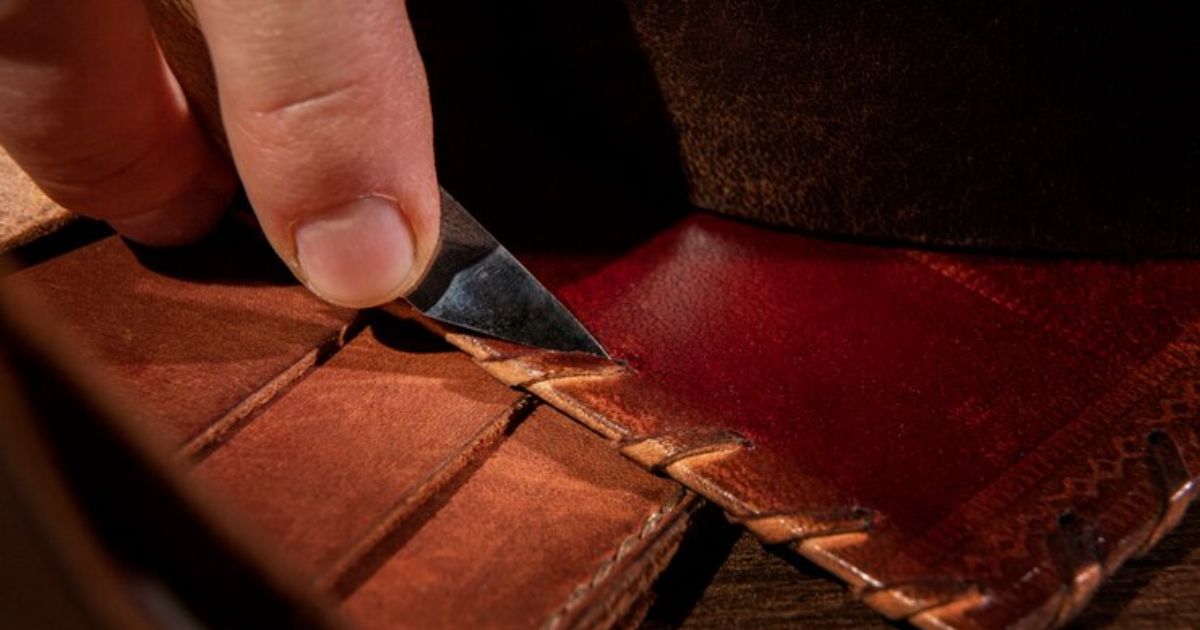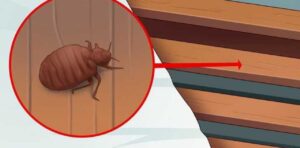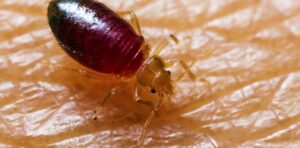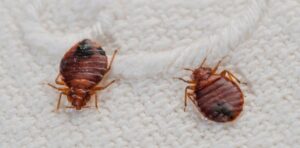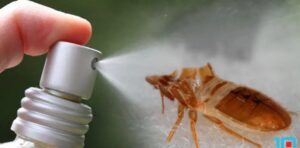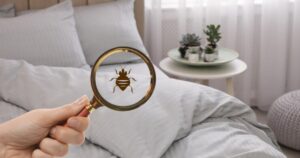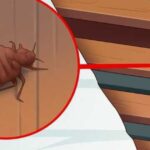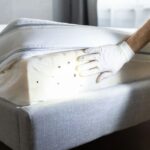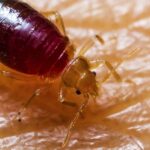When it comes to the unwelcome presence of bed bugs, homeowners are understandably concerned about the safety of their furniture. One common question that arises is whether bed bugs can live on leather. In this article, we will explore the behavior of bed bugs on different surfaces, focusing specifically on leather furniture.
By understanding the factors that deter bed bugs from leather and the preferred hiding spots for these pests, homeowners can take proactive measures to keep their furniture bed bug-free. We will also discuss how to inspect leather furniture for bed bugs and the treatment options available if an infestation is discovered. Join us as we delve into the fascinating world of bed bug behavior on leather and learn how to safeguard your belongings.
Key Takeaways
- Bed bugs have a lower affinity for smooth and non-porous surfaces such as leather.
- Leather furniture provides fewer crevices and hiding spots for bed bugs.
- Leather furniture is less susceptible to bed bug infestations.
- Leather furniture is a potentially safer choice for those concerned about bed bugs.
Bed Bug Behavior on Different Surfaces
Bed bugs exhibit varying behaviors when it comes to different surfaces. Understanding their preferences and infestation patterns is crucial in managing and preventing bed bug infestations. These pests are highly adaptable and have shown resistance to certain materials commonly used in furniture and bedding.
For instance, studies have found that bed bugs can cling to fabrics like linen and cotton, making it easier for them to infest mattresses and other upholstered items. On the other hand, bed bugs have demonstrated a lower affinity for smooth and non-porous surfaces such as leather. This is believed to be due to the lack of crevices and hiding spots that leather furniture provides. Consequently, leather furniture is less susceptible to bed bug infestations, making it a potentially safer choice for those concerned about these pests.
Why Leather Furniture Is Less Susceptible
Leather furniture is considered less susceptible to bed bug infestations due to its smooth and non-porous surface, which provides fewer crevices and hiding spots for these pests. Unlike other fabrics or materials, leather does not have the same amount of tiny spaces where bed bugs can hide and lay their eggs.
This makes it more difficult for them to establish a presence on leather furniture. Additionally, leather is less likely to retain moisture, which is another factor that deters bed bugs from infesting it. Furthermore, leather furniture benefits from its durability and resistance to tearing, reducing the likelihood of bed bugs finding alternative hiding spots within the furniture. With these characteristics, leather furniture proves to be a less favorable environment for bed bugs to thrive, making it a more suitable choice for those concerned about infestations.
Factors That Deter Bed Bugs From Leather
Due to its smooth and non-porous surface, leather furniture presents fewer hiding spots and crevices for bed bugs to establish a presence, making it less susceptible to infestations. However, there are additional factors that deter bed bugs from leather. Firstly, the surface of leather is not as conducive to harboring bed bugs as other materials, such as fabric or wood, which have more fibers or crevices that bed bugs can hide in. Despite these advantages, it’s crucial to remain vigilant, especially in environments where bed bugs live in electronics, as these pests can find hiding places even in seemingly less vulnerable items.
Secondly, leather is not an ideal environment for bed bugs to lay their eggs, as the material does not provide the necessary conditions for egg survival. Lastly, the natural oils found in leather can act as a repellent to bed bugs, making it less appealing for them to establish a presence. To ensure that leather furniture remains bed bug-free, regular inspections using proper inspection methods should be conducted.
The Preferred Hiding Spots for Bed Bugs
One common hiding spot for bed bugs is within the seams and folds of upholstered furniture. These tiny pests have a knack for finding the perfect hiding places, where they can remain undisturbed during the day and emerge at night to feed on unsuspecting hosts. To give you a clearer picture, here are the preferred hiding spots for bed bugs:
- Mattresses and box springs: Bed bugs are known to infest these areas, hiding in the crevices and cracks.
- Bed frames and headboards: The joints and screw holes of these furniture pieces provide ideal hiding spots for bed bugs.
- Cracks in walls and floors: Bed bugs can crawl into small cracks and crevices, making it difficult to detect and eliminate them.
- Electrical outlets and appliances: These areas provide warmth and protection, making them attractive hiding spots for bed bugs.
Understanding where bed bugs prefer to hide is crucial for effective bed bug elimination. Now, let’s transition into the next section about how to inspect leather furniture for bed bugs.
How to Inspect Leather Furniture for Bed Bugs
When inspecting leather furniture for bed bugs, it is important to understand the vulnerability of leather as a potential hiding spot. Bed bugs can easily hide in the cracks and crevices of leather furniture, making it crucial to thoroughly examine all seams, cushions, and any other potential hiding places. Look for signs of infestation such as dark spots, cast skins, or live bugs, and consider implementing effective prevention methods such as regular cleaning, vacuuming, and the use of bed bug-proof covers to protect your leather furniture.
Leather Furniture Vulnerability
Leather furniture can be inspected for bed bugs using a thorough and systematic approach. To ensure the vulnerability of leather furniture to bed bug infestations is minimized, it is important to regularly inspect and maintain it. Here are four steps to inspect leather furniture for bed bugs:
- Visual Inspection: Carefully examine the surface of the furniture, paying close attention to any cracks, crevices, or seams where bed bugs may hide.
- Use a Flashlight: Illuminate dark areas and corners with a flashlight to spot any signs of bed bugs, such as eggs, shed skins, or fecal stains.
- Check Cushions and Upholstery: Remove cushions and thoroughly inspect the upholstery, using a magnifying glass if needed, as bed bugs may seek refuge in these areas.
- Consider Professional Help: If you suspect an infestation, it is advisable to consult a professional pest control company for an expert assessment and treatment.
Signs of Infestation
To effectively inspect leather furniture for signs of bed bug infestation, it is crucial to be familiar with the common indicators and employ a systematic approach. Bed bugs are small, reddish-brown insects that feed on the blood of humans and animals. They are notorious for infesting furniture, including leather sofas and chairs. When inspecting leather furniture for bed bugs, it is important to look for the following signs:
| Signs of Infestation |
|---|
| Bed bug bites |
| Dark stains or spots on the leather |
| Tiny eggs or eggshells |
| Shed skins or exoskeletons |
| Live bed bugs or their fecal matter |
Effective Prevention Methods
To effectively prevent bed bug infestations in leather furniture, it is crucial to implement thorough inspection methods. Here are four steps to inspect leather furniture for bed bugs:
- Visual Examination: Begin by closely inspecting all the seams, crevices, and folds of the leather furniture. Look for any signs of bed bug activity such as live bugs, shed skins, or dark spots of fecal matter.
- Use a Flashlight: Utilize a bright flashlight to examine the furniture in detail. Bed bugs are nocturnal creatures and tend to hide in dark areas, so shining a light can help reveal their presence.
- Check Cushions and Upholstery: Remove cushions and check underneath them, as well as any upholstered areas of the furniture. Pay attention to any tiny eggs or nymphs that may be present.
- Utilize Natural Remedies: Consider using natural remedies for bed bug prevention, such as essential oils like tea tree oil, lavender oil, or peppermint oil. These oils can act as deterrents and help repel bed bugs.
Preventive Measures to Keep Bed Bugs Away From Leather
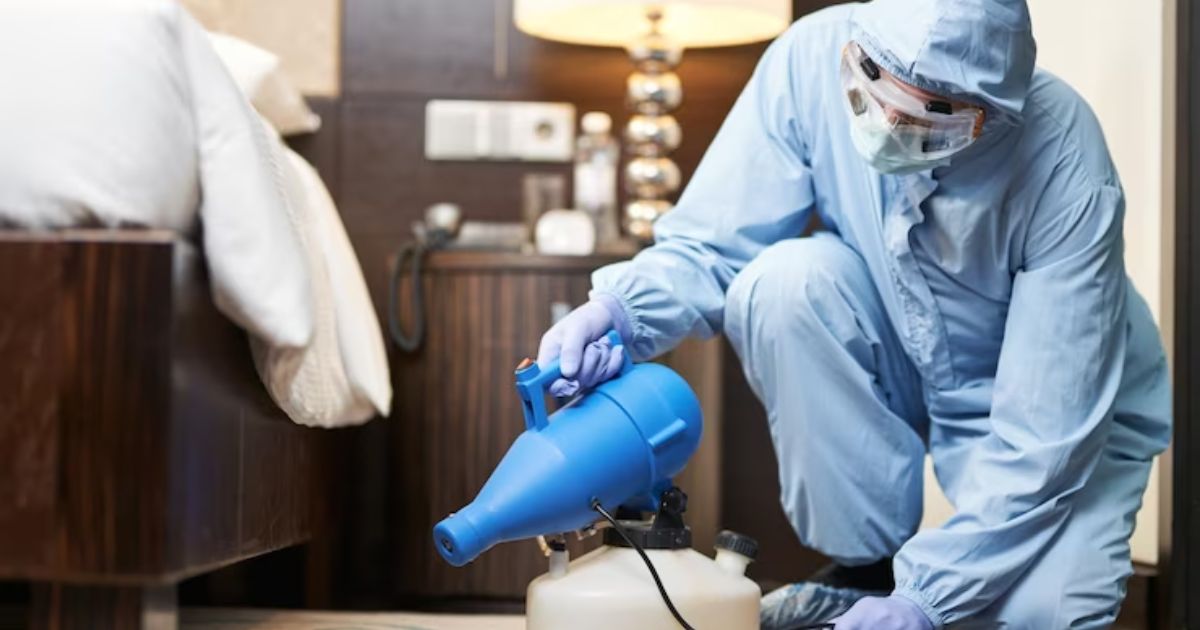
One effective method for preventing bed bugs from infesting leather furniture is by implementing proper maintenance and regular cleaning practices. Leather furniture maintenance plays a crucial role in preventing bed bug infestations. It is important to regularly vacuum and clean leather furniture to remove any potential hiding places for bed bugs. Additionally, using natural remedies for bed bug prevention can also be helpful.
For example, using essential oils such as lavender, tea tree, or peppermint can repel bed bugs due to their strong scent. Another natural option is diatomaceous earth, a fine powder that can be sprinkled on leather furniture to kill bed bugs by dehydrating them. By incorporating these preventive measures, the risk of bed bug infestations on leather furniture can be significantly reduced.
Treatment Options for Bed Bugs on Leather
There are several effective treatment options available for eliminating bed bugs on leather furniture. If you discover a bed bug infestation on your leather furniture, it is essential to take immediate action to prevent the infestation from spreading. Here are four treatment options to consider:
- Leather furniture cleaning: Thoroughly clean the affected leather furniture using a vacuum cleaner with a brush attachment. This will help remove any visible bed bugs, eggs, or fecal matter.
- Heat treatment: Use a professional extermination service that specializes in heat treatment. This method involves raising the temperature of the affected area to a level that is lethal to bed bugs, effectively eliminating them.
- Insecticide treatment: Consult with a professional extermination service to determine the most suitable insecticide for treating bed bugs on leather furniture. Apply the insecticide according to the manufacturer’s instructions, ensuring proper coverage and safety precautions.
- Encasement: Consider encasing your leather furniture in bed bug-proof encasements. These encasements create a barrier that prevents bed bugs from accessing the furniture, effectively trapping any existing bed bugs and preventing future infestations.
FAQ’s
What surfaces do bed bugs avoid?
Bed bugs tend to avoid smooth surfaces such as polished metal and glass, making it more challenging for them to establish hiding spots or harbor in such environments.
How do you clean bed bugs off leather?
To clean bed bugs off leather, use a vacuum to remove bugs and eggs, wipe the leather with a damp cloth, and apply a mild leather cleaner to sanitize the surface.
How do I get bed bugs out of my purse?
To eliminate bed bugs from your purse, empty its contents, vacuum thoroughly, wipe the interior with a disinfectant or alcohol solution, and consider heat treatment by placing it in a hot environment for a period to ensure effective eradication.
Conclusion
In conclusion, bed bugs have a distinct preference for porous surfaces and tend to avoid leather furniture. This is due to the smooth texture of leather, which makes it difficult for bed bugs to find suitable hiding spots and makes it easier to spot and eliminate them.
However, it is still important to regularly inspect and take preventive measures to ensure leather furniture remains bed bug-free. Treatment options are available in case of infestation, but with proper care and maintenance, leather furniture can be a less susceptible choice for bed bugs.

